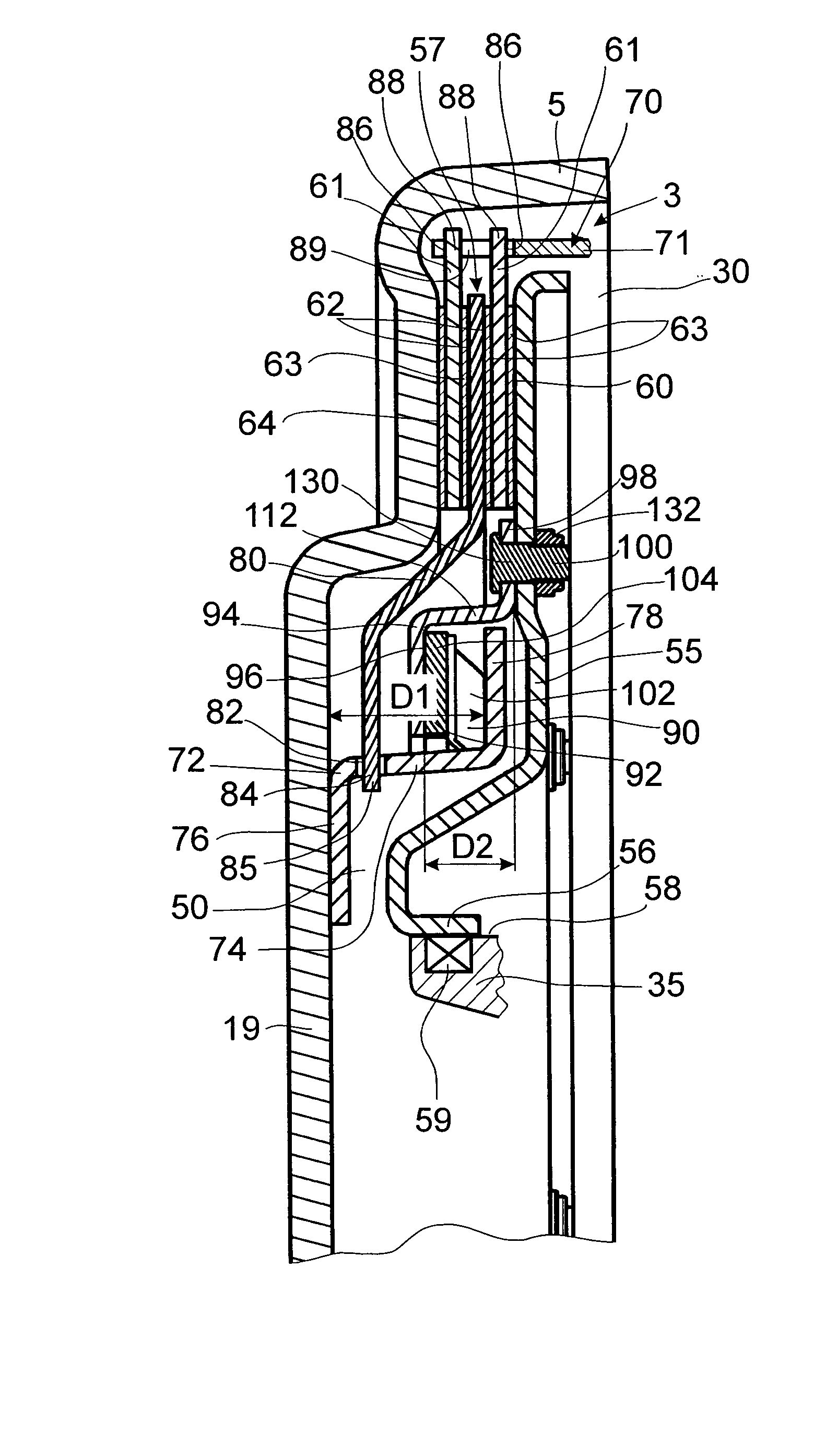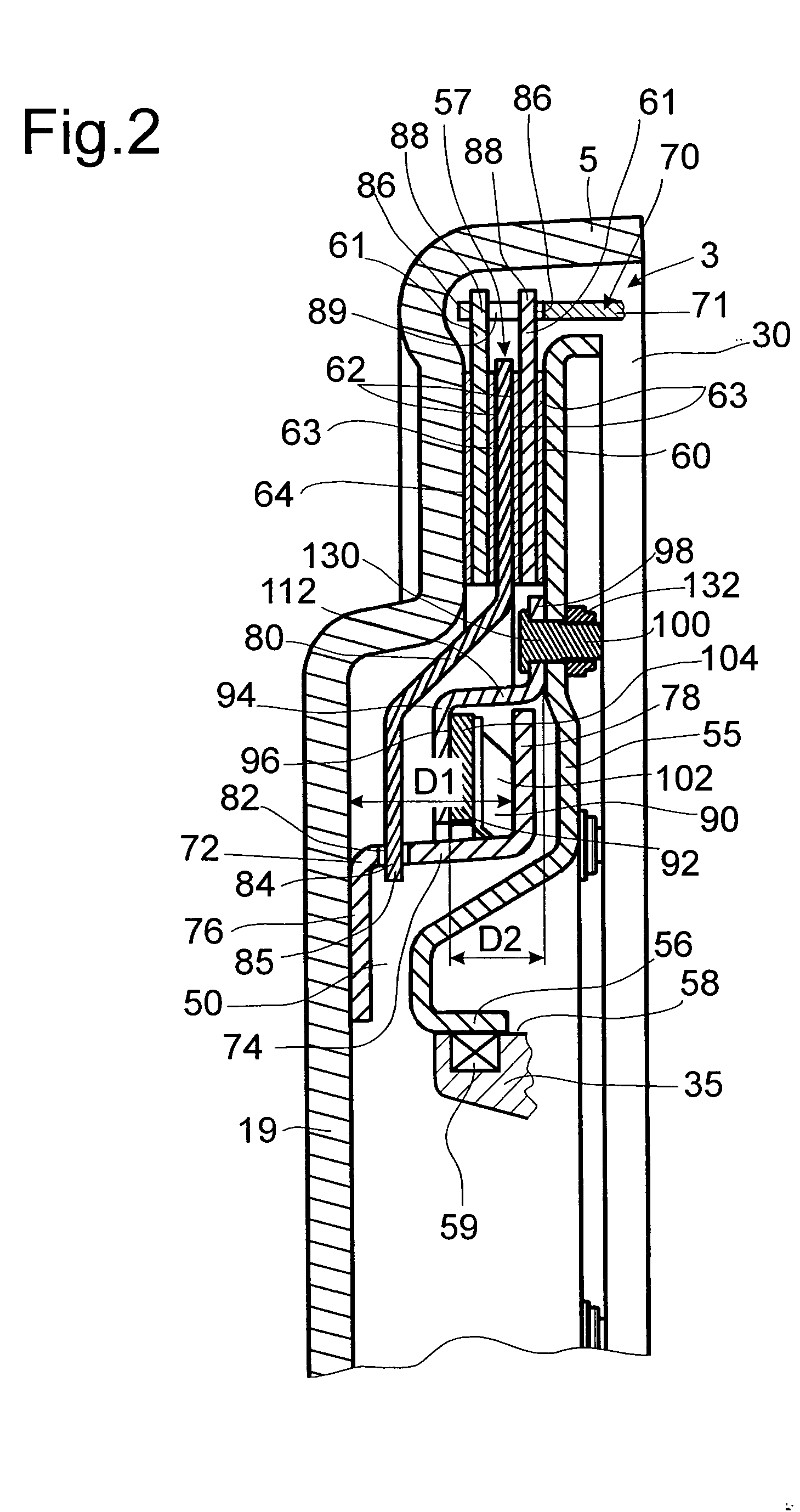Bridging clutch for a hydrodynamic clutch device enclosed by a housing
a technology of hydrodynamic clutch and bridging clutch, which is applied in the direction of rotary clutches, fluid couplings, gearings, etc., can solve the problems of bridging clutches that are found in axial connections to turbine wheels, unable to avoid at least partial premature wear of disks, and comparatively long reaction time of bridging clutches of this type, etc., to achieve favorable low-friction properties, low friction, and wear-free
- Summary
- Abstract
- Description
- Claims
- Application Information
AI Technical Summary
Benefits of technology
Problems solved by technology
Method used
Image
Examples
Embodiment Construction
[0033] The hydrodynamic clutch device 3 shown in FIG. 1 embodies a design known according to the state of the art. This figure is intended to represent how a bridging clutch 57 can be installed in a hydrodynamic clutch device. Reference is made to FIGS. 2-9 with respect to the design of the bridging clutch 57 according to the invention, the bridging clutch 57 being illustrated in detail in those figures and described below.
[0034] According to FIG. 1, the hydrodynamic clutch device 3 has a housing 5, to which a tie plate 6 is attached by means of a weld 4; this plate can be connected by a plurality of mounting elements 7 and a connecting element 9 such as a flexplate to a drive element 11 such as the crankshaft 13 of an internal combustion engine for rotation in common.
[0035] The clutch device 3 also has a bearing journal 17 in the area of an axis of rotation 15; this journal is provided on a cover 19 of the housing 5 and is mounted in a centering guide 21 provided on the drive ele...
PUM
 Login to View More
Login to View More Abstract
Description
Claims
Application Information
 Login to View More
Login to View More - R&D
- Intellectual Property
- Life Sciences
- Materials
- Tech Scout
- Unparalleled Data Quality
- Higher Quality Content
- 60% Fewer Hallucinations
Browse by: Latest US Patents, China's latest patents, Technical Efficacy Thesaurus, Application Domain, Technology Topic, Popular Technical Reports.
© 2025 PatSnap. All rights reserved.Legal|Privacy policy|Modern Slavery Act Transparency Statement|Sitemap|About US| Contact US: help@patsnap.com



